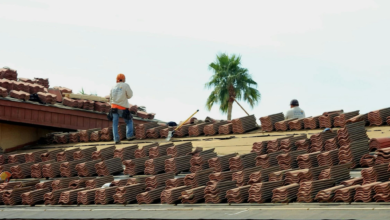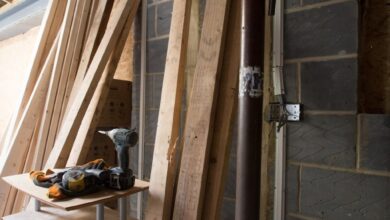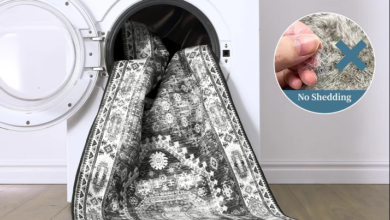Squirrel Removal During Nesting Season: Essential Strategies for Homeowners

Squirrel removal during nesting season can be sensitive, as these creatures are often protected during breeding. Understanding squirrel behavior during this time is crucial for effective removal. To ensure a humane approach while addressing potential property damage, you must identify and manage squirrel nests before they become problematic.
Nesting season typically occurs in the spring and early summer, when female squirrels are busy raising their young. Therefore, homeowners must act quickly if they suspect a nest in or near their property. Failing to address the issue responsibly can lead to long-term damage and complications.
Being informed about the legalities surrounding squirrel removal is essential. Many areas have specific regulations regarding wildlife removal, emphasizing the need for humane solutions. If you face a squirrel issue during nesting season, consider professional wildlife control experts who can handle the situation appropriately and effectively.
Understanding Squirrel Nesting Habits
Squirrels have specific nesting behaviors that vary by season. Recognizing these habits is essential for effective wildlife removal without disturbing nesting squirrels.
Identifying Nesting Seasons
Squirrels typically breed twice yearly, with nesting seasons in late winter (January to March) and late summer (June to August).
Expect increased activity as females prepare nests for their young during these times. It’s crucial to monitor signs of nesting. Look for:
- Increased squirrel activity: Frequent movement near your property.
- Nesting materials: Look for leaves, twigs, and insulation materials gathered around your home.
- Noise: Listen for sounds of chattering or scratching, indicating a nest.
Identifying these signs can help you determine when squirrels are nesting. Early intervention can minimize disruptions to their natural behaviors.
See also: How to Stop a Camera from Recording You at Home
Nest Location and Structure
Squirrels prefer building nests in high, sheltered spots. Common locations include:
- Trees: Hollowed-out areas or leafy canopies.
- Attics or roofs: Squirrels often enter homes through eaves or vents.
Nests are typically constructed with twigs, leaves, and softer materials like fur or grass. They may also use abandoned bird nests or insulation found in homes.
It’s essential to avoid disturbing these nests during the breeding season. Instead, focus on preventive measures to deter squirrels from nesting in unwanted areas. If necessary, consult professionals for safe and humane removal strategies.
Legal and Safety Considerations for Squirrel Removal

When removing squirrels, particularly during nesting season, it is crucial to understand legal regulations and safety measures. This ensures compliance with local laws and the humane treatment of wildlife.
Regulations on Wildlife Removal in Wylie
Wildlife removal is governed by specific regulations to protect animals in Wylie, Texas, especially during nesting season. It is illegal to harm or disturb baby squirrels and their nests.
Permits may be required for trap and removal services. Check with the Texas Parks and Wildlife Department for up-to-date regulations. You should work with licensed professionals who can ensure compliance and implement humane squirrel removal methods.
Key points to remember:
- Avoid removal during nesting season (February to August).
- Ensure that any methods used are humane and approved.
Safety Measures During Removal
Safety is paramount when dealing with squirrels, as they can carry diseases and may be defensive if cornered. When planning for removal, always wear appropriate personal protective equipment (PPE), such as gloves and masks.
Be aware of your surroundings and avoid direct contact with squirrels. Use traps that minimize stress and harm to the animals. If dealing with nesting squirrels, carefully inspect the area to avoid disturbing the nest.
Safety Checklist:
- Use gloves when handling traps.
- Keep pets indoors to prevent interactions.
- Always have a plan for immediate assistance if needed.
Effective Squirrel Removal Methods
When dealing with squirrel removal, especially during nesting season, choosing humane and safe methods is crucial. The focus should be removing squirrels without harming the young, ensuring the animals’ welfare.
Non-Invasive Techniques
Non-invasive techniques prioritize humane approaches to managing squirrels. Here are some effective options:
- Exclusion: Seal entry points in attics or basements to prevent squirrels from nesting. Use materials like steel mesh that they cannot gnaw through.
- Habitat Modification: Reduce attractants by trimming tree branches away from the home and storing food securely. This discourages squirrels from settling near your property.
- Repellents: Employ natural repellents such as ammonia-soaked rags or commercial squirrel deterrents. These can be placed near entry points to discourage nesting.
Consider these methods as safe alternatives, ensuring that you do not disturb young squirrels that may be present.
Relocation Strategies
Relocation is a viable method if you need to remove squirrels with young safely. Key considerations include:
- Timing: Relocate only after ensuring the young have been weaned, typically around 8-10 weeks. This prevents orphaning and ensures family units remain intact.
- Trapping: Humane traps can be used to catch squirrels without harming them. Place traps near nesting areas and bait them with peanut butter or sunflower seeds.
- Release: Choose a location at least a mile away to release squirrels. Ensure this area is suitable and has plenty of trees and food sources.
Following these strategies will help you conduct effective squirrel removal without harming their young.
Post-Removal Actions and Habitat Management

After removing squirrels during nesting season, you must proactively prevent their return and manage your property effectively. Implementing repairs and creating alternative habitats can deter future infestations and promote a healthier environment.
Repair and Prevention
Begin by inspecting your property for any openings squirrels might use to re-enter. Common entry points include:
- Gaps in siding
- Cracks in the foundation
- Holes in the roof
Seal these entry points with durable materials like metal mesh or caulk. Regularly examine your roof and trees for overhanging branches that could serve as bridges for squirrels. Additionally, ensure that your attic vents are screened to deny access.
Keep your yard tidy to eliminate potential nesting sites. Remove debris, old bird nests, and heavy vegetation that could shelter them. Maintain your garden and store food securely to minimize food sources that attract squirrels. Avoid methods like poison, which pose risks to pets and other wildlife.
Creating Alternative Habitats
Consider enhancing your landscape with appealing alternatives to prevent squirrels from returning. Plant native trees and shrubs that provide natural food sources for squirrels away from your home.
Designate an area for wildlife to thrive. A brush pile or a small garden can become a sanctuary for small animals, encouraging them to nest in suitable places far from your property. Install squirrel feeders in that area, stocked with corn or nuts. This strategy may keep them occupied and away from structures.
For additional assistance, consider contacting Critter Stop at (214) 234-2616 for a free inspection. They are known for high-quality work and exceptional customer service, making them a reliable choice for wildlife management in Wylie.




